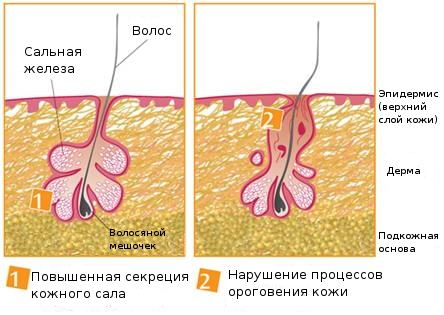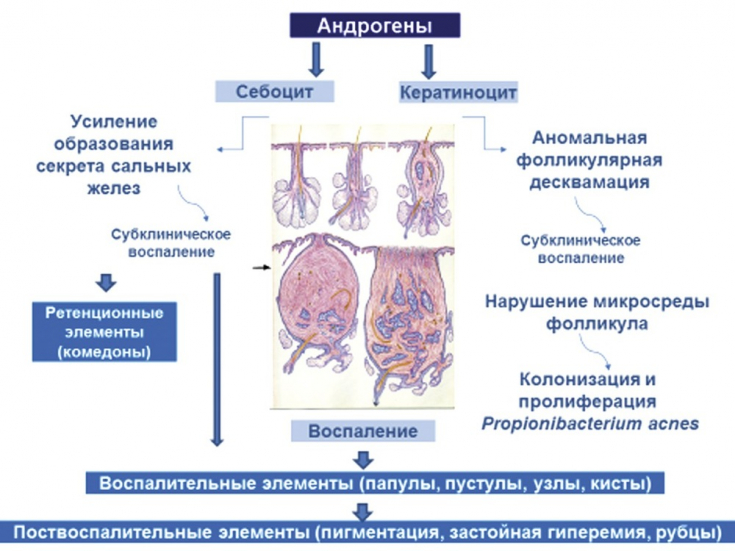Acne — This is a common inflammatory skin disease that affects the hairy-sebaceous organs of the skin. The pathogenesis of this condition is classically associated with follicular hyperkeratinization, microbial colonization by Propionibacterium acnes, increased sebum production, and inflammation.
The relationship of these four factors has been the subject of recent research, which has also been extended to other areas such as diet, genetics and oxidative stress.
In the article estet-portal.com you can learn in detail the physiological role of androgens in the production of sebum and the formation of acne.
Androgen receptors as susceptibility factors
The exact mechanism of testosterone in the pathogenesis of acne remains to be fully elucidated. Testosterone acts on the sebaceous gland mainly through local conversion to dihydrotestosterone (Dihydrotestosterone, DHT, 5α-dihydrotestosterone, 5α-DHT, androstanolone or stanolone) — a biologically more active form of testosterone, formed under the influence of the enzyme 5α-reductase.

Among all androgens, DHT binds to cytoplasmic androgen receptors with the highest affinity; these receptors are most widely expressed in sebocytes, eccrine sweat gland epithelium, and dermal papilla cells.
Androgens primarily affect sebocyte proliferation.
Androgens, fatty acids and linoleic acid act via γ-receptors activated by peroxisome proliferators to regulate epidermal growth and sebocyte differentiation. Multilevel effects of androgens on the development of acne
Increased sebum production plays a major role in the pathogenesis of acne vulgaris, as holocrine sebum secretion and accumulation of keratinocytes under the layer of desquamated cells in the superior follicular canal are key.

Proliferation of P. acnes enhances the immune response, causing the typical inflammatory process seen in acne.
However, the role and order of these stages is inconsistent.
It is believed that differential expression of androgen receptors mediates the distribution of acne lesions. Unlike U-zones, facial T-zones express higher levels of androgen receptor protein and mRNA, reflecting the clinical distribution of acne.
Thank you for staying with estet-portal.com. Read other interesting articles in the "Cosmetology" section. You may be interested in
Acne pathogenesis and treatment mechanisms based on carboxytherapy
Watch the most interesting videos on our channel in
Youtube







Add a comment